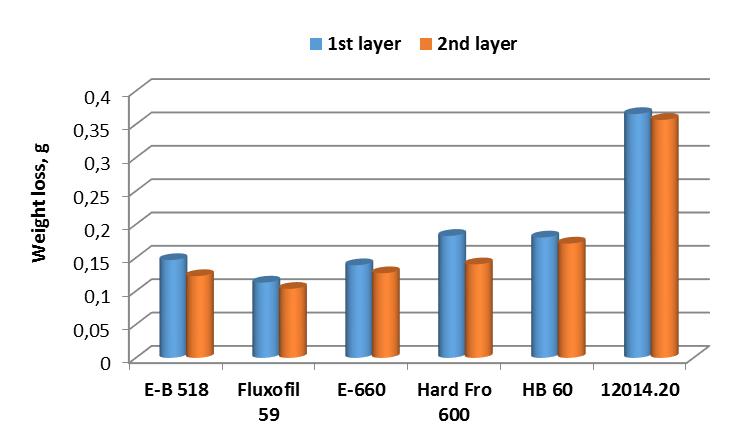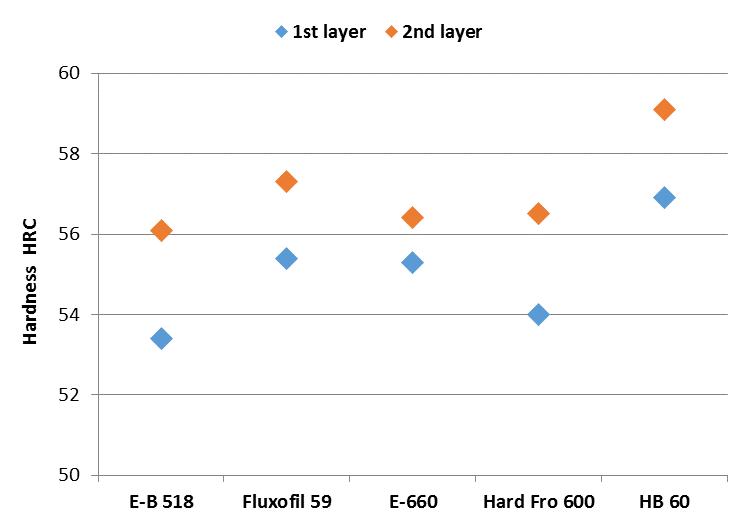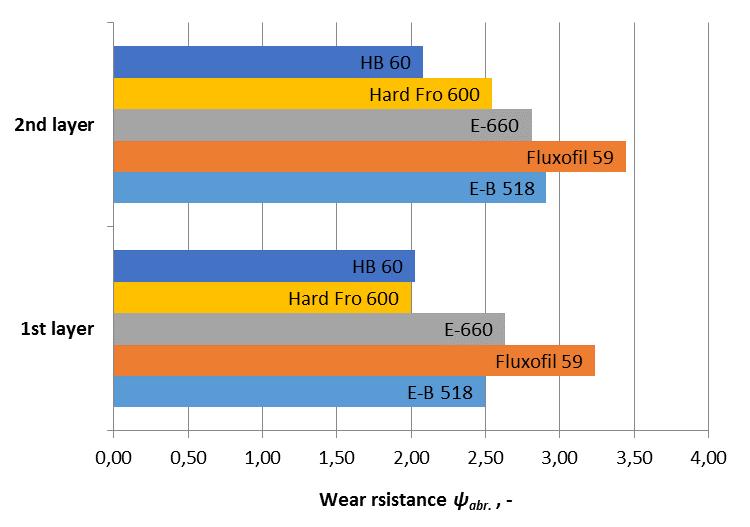
12 minute read
Jan Lilko, Plamen Kangalov, Juraj Balazi
from Agricultural, Forest and Transport Machinery and Technologies (ISSN: 2367– 5888) vol VII, 2020
by kangalov
[7] Nikolov, M., Kangalov, P., (2019) Surface Roughness of Reconditioned Details Having
Different Materials of Frictional Pairs // Proceedings – Agricultural Machinery, Year III,
Advertisement
Vol. 1/5, June 2019, pp. 26 – 28, ISSN: 2535-0269 (Print), ISSN: 2535-0277 (Online) [8] Vasilko, K., (2009) Teória a prax trieskového obrábania. Prešov: Fakulta výrobných technológií Technickej univerzity v Košiciach, so sídlom v Prešove. 532 s. ISBN 978-80553-0152-5
CONTACTS
Martin Baráth, Department of Quality and Engineering technologies, Faculty of Engineering, Slovak University of Agriculture in Nitra, Tr. A. Hlinku 2, 949 76 Nitra, Slovakia, xbarath@is.uniag.sk
Ján Žitňanský, Department of Quality and Engineering technologies, Faculty of Engineering, Slovak University of Agriculture in Nitra, Tr. A. Hlinku 2, 949 76 Nitra, Slovakia, jan.zitnansky@uniag.sk
Hristo Beloev, Department of Agricultural Machinery, Agrarian and Industrial Faculty, University of Ruse “Angel Kanchev”, 8 Studentska str., 7017 Ruse, Bulgaria, e-mail: hbeloev@uni-ruse.bg
Martin Kotus, Jan Lilko, Plamen Kangalov, Juraj Balazi
Abstract: This paper deals with the evaluation of the resistance of weld deposit materials to abrasive wear. Abrasive wear is one of the degradation processes of metallic materials. Intensive manifestation of abrasive wear is on the tools of agricultural machinery working in soil conditions (e.g. plow tine, etc.). We determined the relative resistance to wear on the basis of a tribological test defined by the standard ČSN 01 5084. For selected additional materials, we state the suitability of their use in conditions where abrasive wear prevails. By creating weld deposit on the working parts of the machines, it is possible to reduce wear and thus extend the technical life of the machines. Keywords: relative resistance, abrasive wear, additive material, weld deposit
INTRODUCTION
Agricultural machinery in operation is exposed to the various types of wear. Specific wear conditions cause imbalances in the service life of individual machine parts. This mainly applies to tools, which are exposed not only to the influence of the soil itself (type, grain size), but also to the chemical aggressiveness (pH, humidity).
The wear mechanism is a complex phenomenon due to the connection with factors whose intensity of interaction depends on the working conditions in the environment in which the mechanical parts are used on the working parameters of the device and on the material properties of the contacting surfaces. (Zdravecká, 2011).
The basic precondition for the prevention of degradation processes caused by abrasion is the appropriate choice of technical material intended for conditions with increased wear. The internal microstructure of the material is also important, which should withstand the dynamic influences and the action of external forces on the tillage tools. With increased dynamic stress, damage to the entire tool can occur due to the low toughness of the material. For this reason, it is possible to apply the abrasion-resistant layer only in the area of the greatest abrasive wear. (Novák et al., 2015; Votava et al., 2019).
By creating the abrasion-resistant layer on the functional part of the tool, it is possible to reduce wear and thus extend the technical life of the agricultural machine. Use of weld deposit is the most affordable and economically advantageous way to reduce wear on the functional surfaces of the work tool. There are currently a large number of hardfacing materials with different mechanical properties on the market.
It is possible to determine which additive material resists abrasive wear during the laboratory or the operational tests. The operational tests correspond to the actual operation of the agricultural machine in specific soil conditions. The laboratory tests can simulate operating conditions or define prescribed parameters that characterize certain material properties.
The aim of the paper is to define the resistance of the selected additional materials used in welding to conditions of intensive abrasive wear. We evaluate the resistance of additional materials on the basis of measuring the hardness of welds and determining the relative resistance to the abrasive wear according to the relevant standards.
MATERIAL AND METHODS
We have selected five additional materials for laboratory testing, which are commonly available on our market. Selection of the additional materials was based on the achievable hardness of the created weld deposits stated by the manufacturer. We also took into account the chemical composition of the additional materials, especially the effect of carbon and chromium on the resulting structure of the weld deposit. Many authors (Bujna et al., 2013; Kalincová et al., 2016; Kováč – Mikuš et al., 2014) have concluded in their work that the
increased hardness of weld deposit has an effect on the increased resistance of materials to the abrasive wear.
The hardness of HRC and the chemical composition of the materials according to the manufacturer are given in Table 1. Electrode E-B 518 is suitable for weld deposit functional surfaces resistant to wear while simultaneous impact stress. The Fluxofil 59 electrode is a tubular wire with a basic filling characterized by higher toughness and resistance to severe shocks and impacts. The rutile-basic electrode E-660 is suitable for weld deposit with medium resistance to compressive stress and metal-to-metal friction wear. The basic hardfacing weld deposit electrode Hard Fro 600 is suitable for functional surfaces resistant to the mineral abrasion and wear. The rutile-basic electrode HB 60 is resistant to medium wear due to the abrasion, impact and pressure. Table 1 Indicative chemical composition of electrodes and hardness HRC
Material / C element, % hemical C Cr Si Mn Ni Mo V W Hardness HRC
E-B 518 3.5 29.0 < 1.5 < 1.5 – – – – 54÷58 Fluxofil 59 0.7 7.0 < 0.7 < 1.1 < 1 < 2.5 – < 2 53÷59 E-660 1.0 4.5 0.5 1.5 – – – – 55÷60 Hard Fro 600 0.5 7.5 0.75 0.45 – 0.45 0.7 – 55÷57 HB 60 1.0 4.5 0.5 1.3 – – – – 55÷60 HRC hardness measurement was performed in accordance with STN EN ISO 6508 Rockwell hardness test with hardness scale C (diamond cone, loading force 1471 N). The suitability of the use of the mentioned electrodes in the conditions of the abrasive wear is determined on the basis of the standard ČSN 01 5084 - Determination of the resistance of metallic materials against abrasive wear on a device with an abrasive cloth. The given standard for the calculation of relative resistance defines as a standard material - steel class 12 014.20. The conditions for the test itself were as follows: friction speed - max. 0.5 m.s
-1
transverse feed per revolution - 3 mm diameter of the friction path - 480 mm friction path length - 50 m pressing pressure level - 0.32 MPa abrasive cloth - Globus 100 sample length - 50 mm of diameter 10 mm
The evaluation criterion for determining the resistance under laboratory conditions is the "relative resistance to the abrasive wear (ψabr.)", which is calculated according to the formula:
ψ
h
hE abr W
W.
(1)
Where: WhE – average weight loss of standard test specimens, g Wh – average weight loss of test specimens of test material, g
The creation of weld deposits and the tests themselves were performed in the laboratory conditions of the Department of Quality and Engineering Technologies at Faculty of Engineering at Slovak University of Agriculture in Nitra, Slovakia.
RESULTS AND DISCUSSION
The determined average values of weight loss, relative wear resistance and hardness of HRC are given in Table 2. A graphical representation of the detected values is shown in Figures 1 to 3.
Table 2 Measured and calculated average values when testing samples
Electrode / weld deposit Weight loss, g Wear resistance ψabr. Hardness HRC 1st layer 2nd layer 1st layer 2nd layer 1st layer 2nd layer
E-B 518 0.1466 0.1226 2.49 2.91 53.4 56.1 Fluxofil 59 0.1129 0.1035 3.24 3.45 55.4 57.3 E-660 0.1389 0.1269 2.63 2.81 55.3 56.4 Hard Fro 600 0.1829 0.1402 2.00 2.54 54.0 56.5 HB 60 0.1805 0.1714 2.02 2.08 56.9 59.1 Etalon 12014.20 0.3655 0.3566 1 1 20.4 20.7
Based on the obtained data, we state that the highest relative resistance and thus the smallest weight loss were achieved by the Fluxofil 59 deposit in both methods of weld deposit formation. The lowest value of relative resistance was achieved by the Hard Fro 600 material with a single-layer weld deposit. HB 60 achieved the lowest relative resistance in the twolayer weld deposit. It should be noted that Fluxofil 59 and Hard Fro 600 had comparable carbon and chromium contents, but different molybdenum contents, with a certain nickel and vanadium content.
For all tested additive materials, we recorded lower values of weight loss in the twolayer weld deposit. This is probably due to the different mixing of the filler material with the base material during welding deposit. It can be assumed that in the case of a two-layer weld deposit, the proportion of the additive material is higher than in the base material.
By comparing the dependence between the weight loss and the hardness of the weld deposits, a different order of the additional materials can be seen with respect to the abrasion wear resistance. This is due to the percentage of individual chemical elements in the weld deposit metal structure. The influence of individual elements on the resulting microstructure of the created weld deposits is the subject of further research.
Fig. 1 Weight loss of samples in 1- and 2-layer welding deposit

Fig. 2 Hardness HRC welding deposit
The value of relative resistance to abrasive wear has a comparative significance not only between the additional materials tested by us, but also with the results of other authors. Votava et al. (2020) achieved a relative resistance ψabr. =1.5÷2.2 for electrodes with a basic coating. For electrodes with rutile coating, they achieved a relative resistance ψabr. =3.6. Kováč et al. (2014) achieved values of relative resistance in the range of ψabr. =1.5÷1.7 when saturating the surface with boron. Muller et al. (2011) achieved relative resistance ψabr. =1.9÷3.1 when monitoring martensitic deposits. And when monitoring ledeburitic weld deposits, it reached a relative resistance ψabr. =2.7÷3.1. He evaluated the relative resistance of stellites as well, while reaching the relative resistance ψabr. =1.9÷2.7.

Fig. 3 Relative wear resistance ψabr.
The laboratory tests against the abrasive wear have a significant comparative character between individual additional materials. The main advantage is the constant conditions during the entire test. The test can be one of the primary indicators of the suitability of a given material for use in the specific operating conditions, e.g. in the case of the abrasive wear. (Votava et al., 2020)
Based on the testing of the samples, it is generally possible to state that with increasing hardness of the weld (from 1-layer to 2-layer weld) we achieved a reduction of wear in all weld deposits. Reducing weight loss in operation will result in greater resistance to the abrasive wear and thus longer service life of the tillage implements.
CONCLUSION
Agricultural machinery and their parts are exposed to the various degradation processes during operation. Each production organization is looking for different ways to reduce unwanted repair costs and extend the technical life of work tools. One possibility is to create functional layers on the wear-resistant surface tools. There are several ways to form the abrasion resistant layers on various tools of agricultural machinery, e.g. Kováč et al. (2014), Čičo et al. (2019), Kalincová et al. (2016).
In this paper, we dealt with the assessment of the resistance of the additional materials to abrasive wear. We assessed the suitability of the use of additional materials on the basis of hardness and determination of the relative resistance to the use of individual weld deposits. The results obtained by the weld deposits tested by us are similar to those achieved by other authors in their scientific works. Therefore, we consider the given additional materials to be suitable for use in the formation of wear-resistant layers.
By creating the abrasion-resistant layers, you can significantly extend the technical service life of the tillage parts of agricultural machinery. In the future, it is necessary to continue in this area of the research and constantly look for new ways to reduce wear and thus reduce operating costs.
REFERENCES
[1] Bujna, M., Prístavka, M., Kaplík, P., (2013). Impact of insufficient cleaning on the quality of molybdenum layer applied by thermal spraying. In Materials, technologies and quality assurance. (2013), pp. 35-40. ISBN 978-30-382-6720-1. [2] Čičo, P., Drlička, R., Šoška, R., Róna, Z., (2019). Soil tests of renovated ploughshare points. In TAE 2019 - Proceeding of 7th International Conference on Trends in
Agricultural Engineering 2019, 2019, pp. 99-102. ISBN 978-80-213-2953-9. [3] Kalincová, D., Ťavodová, M., Hnilicová, M., Veverková, D., (2016). Machinery for forest cultivation – Increase of resistance to abrasive wear of the tool. In MM Science
Journal, November 2016, pp. 1269-1272. ISSN 1805-0476. [4] Kotus, M., (2010). Stanovenie odolnosti prídavných materiálov pri vytvorení jednovrstvových návarov. In Technická diagnostika strojů a výrobních zařízení „DIAGO 2010“. Ostrava : Vysoká škola baňská – Technická univerzita, 2010. pp.196-201. ISSN 1210-311X. [5] Kováč, I., Mikuš, R., Žarnovský, J., Drlička, R., Žitňanský, J., Výrostková, A., (2014).
Creation of wear resistant boride layers on selected steel grades in electric arc remelting process. In Metallic materials, 2014, 52(6), pp. 387-394. ISSN 1338-4252. [6] Kováč, I., Vanko, N., Vysočanská, M., (2014).Verification of the working life of a ploughshare renovated by surfacing and remelting in the operation. In Research in
Agricultural Engineering, 2014, 60, pp.98-103. ISSN 1805-9376.
[7] Müller, M., Valášek, P., Novák, P., Hrabě, P., Paško, J., (2011). Overlays and composites application in technology of sugar beet cultivation and harvest. In LCaŘ 127, num. 9–10, 2011, pp.304-307. ISSN 1210-3306. [8] Novák, P.; Müller, M.; Hrabě, P., (2015). Application of overlaying material on surface of ploughshare for increasing its service life and abrasive wear resistence. In Agronomy
Research, 13, 2015 (1), pp. 158-166. ISSN 1406-894X. [9] Prístavka, M., Dostál, P., Beloev, H., Bujna, M., (2014) Manufacturing Machines in
Production Process//. Agricultural, Forest and Transport Machinery and Technologies,
Vol.1, ISSN 2367-5888, 2014, pp. 41-46. [10]Votava, J., Fajman, M., Polcar, A., Kumbár, V., (2019). Using hard-metal deposits in sugar beet harvesters. In LCaŘ, 2019, 135(9-10), pp. 297-302. ISSN 1210-3306. [11]Votava, J., Šmak, R., Polcar, A., Kumbár, V., (2020). Using hard metal to eliminate abrasive wear of passive parts of sugar beet harvesters. In LCaŘ, 2020, 136(9-10), pp. 313-317. ISSN 1210-3306. [12]Zdravecká, E., 2011. Možnosti riešenia abrazívneho opotrebenia v technickej praxi. In
TriboTechnika, Roč. IV, č.1, 2011. ISSN 1338-0524.
CONTACT
Martin Kotus, Department of Quality and Engineering Technologies, Faculty of Engineering, Slovak University of Agriculture in Nitra, Tr. A. Hlinku 2, 94976 Nitra, Slovak Republic, e-mail: martin.kotus@uniag.sk
Ján Lilko, Department of Quality and Engineering Technologies, Faculty of Engineering, Slovak University of Agriculture in Nitra, Tr. A. Hlinku 2, 94976 Nitra, Slovak Republic, e-mail: xlilko@uniag.sk
Plamen Kangalov, Department of Repair and Reliability, Agrarian and Industrial Faculty, University of Ruse, 8, Studentska Str., 7017 Ruse, Bulgaria, e-mail: kangalov@uni-ruse.bg
Juraj Baláži, Department of Quality and Engineering Technologies, Faculty of Engineering, Slovak University of Agriculture in Nitra, Tr. A. Hlinku 2, 94976 Nitra, Slovak Republic, e-mail: juraj.balazi@uniag.sk









